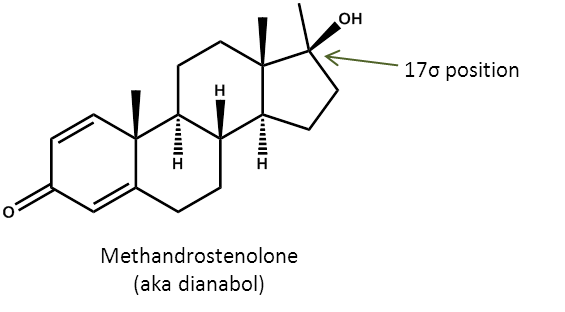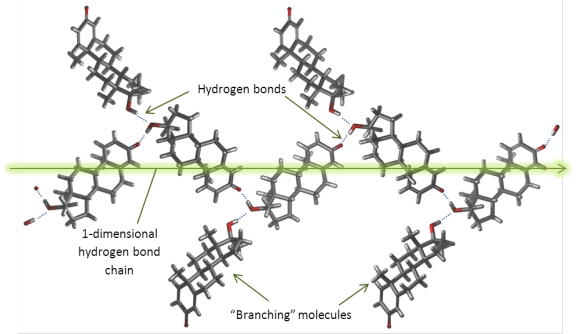Hasta la Vista, Babies…
What is it?
Back in 1977, celebrated bodybuilder and actor Arnold Schwarzenegger admitted to using the steroid methandrostenolone in order to boost muscle gains. Invented by a team of chemists in Switzerland in 1956, methandrostenolone (better known as dianabol) quickly became a hit among bodybuilders due to its ability to pass through the liver virtually unscathed – a property required for the oral consumption of drugs as opposed to less-convenient intravenous methods. This liver-passing property is owed to the carbon attached to the 17σ position.

The old saying "if it looks too good to be true, it probably is" certainly applies to the prolonged consumption of methandrostenolone. In addition to the anabolic activity of dianabol, long-time users can look forward to a number of potential nasty side effects, including but not limited to gynecomastia (enlargement of breast tissue in males), baldness and infertility.
What does it look like?
Despite decades of increasing popularity among overzealous gym-goers, the crystal structure of methandrostenolone was published for the first time in 2013. In the structure, the molecules are arranged in branched, 1-dimensional chains that propagate through hydrogen bonds. These features are highlighted on the figure below. Carbon is shown in grey, oxygen in red and hydrogen in white.

Where did the structure come from?
This structure was published last year: J. Karpinska, A. Erxleben, P. McArdle, Acta Crystallogr. Sect. E, 69 (2013) o60, and is an open access paper.






